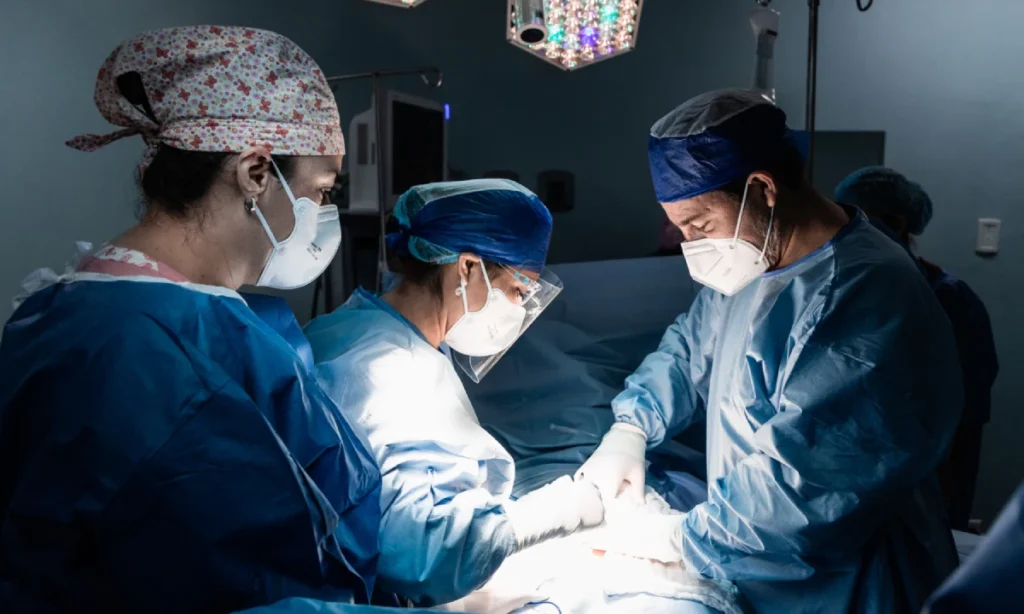Are you tired of wearing thick glasses or struggling with contact lenses because of high myopia (severe nearsightedness)? In this blog, we’ll explore whether LASIK is a viable option for those with high myopia. We’ll look at what high myopia is, how LASIK works for severe nearsightedness, and whether it’s worth considering.
Contents
Is LASIK an Option for High Myopia?

LASIK surgery is a popular choice for correcting vision problems, but is it suitable for individuals with high myopia? High myopia, or severe nearsightedness, means having a prescription usually ranging from -6.00 diopters or higher.
To determine if you’re a good candidate for LASIK, several factors need to be considered:
- Prescription Range: LASIK can correct myopia with a prescription up to about -8.00 to -10.00 diopters. If your myopia is higher than this range, LASIK may not be the best option.
- Corneal Thickness: Your cornea needs to be thick enough to handle the reshaping process. High myopia often requires more tissue removal, so having a sufficiently thick cornea is crucial.
- Overall Eye Health: Your eyes must be generally healthy. Conditions like glaucoma, cataracts, or severe dry eye can affect your eligibility for LASIK.
- Stable Vision: Your prescription should be stable for at least a year before considering LASIK. Frequent changes in your vision could indicate that your eyes are still changing, making surgery less predictable.
In summary, LASIK can be an option for high myopia up to about -8.00 to -10.00 diopters, provided your eyes meet the necessary health criteria. However, for those with higher prescriptions or other eye health issues, alternative treatments might be more appropriate. Always consult with an eye care professional to explore the best vision correction options for your specific needs.
Risks and Complications of LASIK for People With High Myopia

While LASIK surgery can be highly effective for correcting high myopia, it comes with potential risks and complications, especially for those with severe nearsightedness.
Potential Risks and Side Effects
- Glare and Halos
- Higher risk of under-correction (not enough correction) or over-correction (too much correction)
- Dry Eyes
- Regression
- Infection and Inflammation
- Longer Healing Time
- Visual Fluctuations
In summary, while LASIK for high myopia comes with potential risks and complications, careful consideration and proper care can mitigate these risks.
Alternatives to LASIK for High Myopia
If you have high myopia and LASIK isn’t a suitable option for you, there are other effective vision correction alternatives to consider such as PRK, ICLs, and RLE.
Comparing Alternatives to LASIK
Each of these alternatives offers unique benefits and may be more suitable than LASIK for individuals with high myopia. Here’s a quick comparison:
| Alternative | Procedure Type | Suitability | Recovery Period | Key Benefits |
|---|---|---|---|---|
| PRK | Corneal reshaping | Thin corneas, high LASIK risk | Longer than LASIK | Suitable for thin corneas |
| ICLs | Lens implantation | High myopia, thin corneas | Short, vision improves quickly | Reversible, minimal corneal impact |
| RLE | Lens replacement | High myopia, older patients | Similar to cataract surgery | Permanent, corrects multiple vision issues |
Your Contribution Can Help The Needy
So, if you think you are eligible to undergo LASIK Surgery, or want to know which surgery option would be best suitable according to your eye prescription, at EyeMantra Foundation, you can explore other options available for specs removal. Book your free appointment now at +91 9711116605.
As more people need glasses or contacts to see clearly, vision problems are becoming more common. Sadly, many people who need eye surgeries or other treatments can’t afford them. That’s why we’re reaching out to you—your small donation can help restore someone’s sight, enabling them to see the world clearly once again.
Join Hands with EyeMantra Charitable & Be The Reason To Bring Back Their Vision
